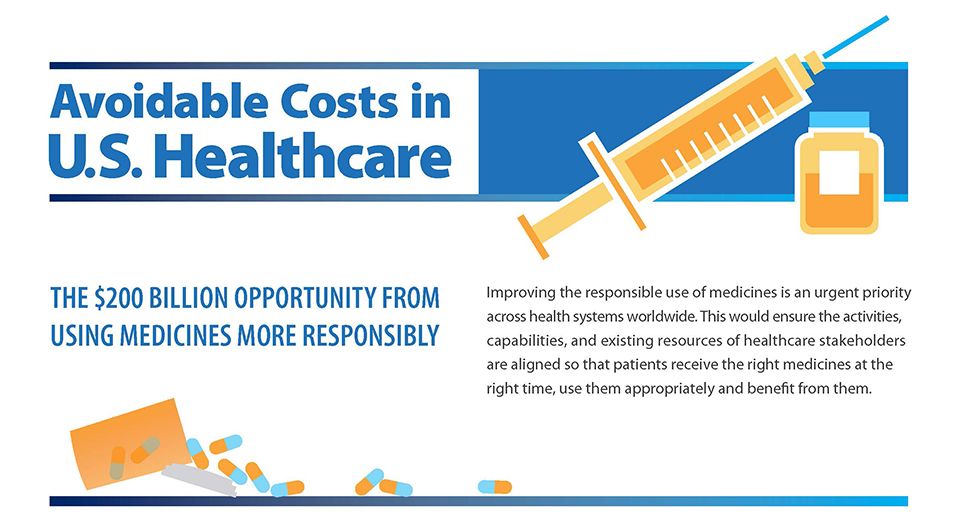Responsible medication use key to lower healthcare costs
Delays in treatment and medication nonadherence are the major reasons behind avoidable costs in the healthcare system, according to a new study released this week.
Delays in treatment and medication nonadherence are the major reasons behind avoidable costs in the healthcare system, according to a new study released this week.

Click to view a related infographic, courtesy of IMS Institute for Healthcare Informatics.
Avoidable costs of more than $200 billion are incurred each year in the U.S. healthcare system, representing 8% of the country’s total annual healthcare expenditures, the IMS Institute for Healthcare Informatics found.
“This also translates to a significant cost to patients and unnecessary utilization of healthcare resources, including 400 million hospital visits annually. This could all be avoided if medicines were used more responsibly,” Murray Aitkin, executive director of the IMS Institute for Healthcare Informatics, said on a conference call with media.
Medication nonadherence drives the largest avoidable cost – $105 billion annually – in U.S. healthcare, IMS found. Delays in applying evidence-based treatment to patients also results in $40 billion in annual avoidable costs. After reviewing four primary disease areas: hepatitis C, type 2 diabetes, atrial fibrillation, and coronary heart disease (CHD), IMS found that the largest avoidable impact to the U.S. healthcare system is in the area of diabetes, where delays increased outpatient visits and hospitalizations.
In addition, the misuse of antibiotics contributes to antimicrobial resistance and an estimated $34 million each year in avoidable costs. An additional $1 billion is spent on about 31 million inappropriate antibiotics prescriptions that are dispensed each year, typically for viral infections, according to IMS.
However, “there are encouraging signs that efforts to drive responsible antibiotics use are paying off, particularly in the declining number of prescriptions for the common cold and flu,” according to a statement from IMS.
The IMS Institute for Healthcare Informatics also sees major improvements with medication adherence, which will drive down avoidable costs in the future. “The Affordable Care Act, including incentives for a performance-based payment system and the introduction of the Accountable Care Organization, enables Medicare to really put a focus on helping support these areas. Adherence is clearly indicated in the ACO performance metric,” Aitken said.
“Performance-based payments and a more integrated delivery of healthcare are elements that…will be positive forces in terms of addressing the avoidable costs we have described,” Aitkin added.
Other factors driving U.S. healthcare costs include: suboptimal use of generics, medication errors, and mismanaged polypharmacy, according to IMS.
FDA’s Recent Exemptions: What Do They Mean as We Finalize DSCSA Implementation?
October 31st 2024Kala Shankle, Vice President of Regulatory Affairs with the Healthcare Distribution Alliance, and Ilisa Bernstein, President of Bernstein Rx Solutions, LLC, discussed recent developments regarding the Drug Supply Chain Security Act.